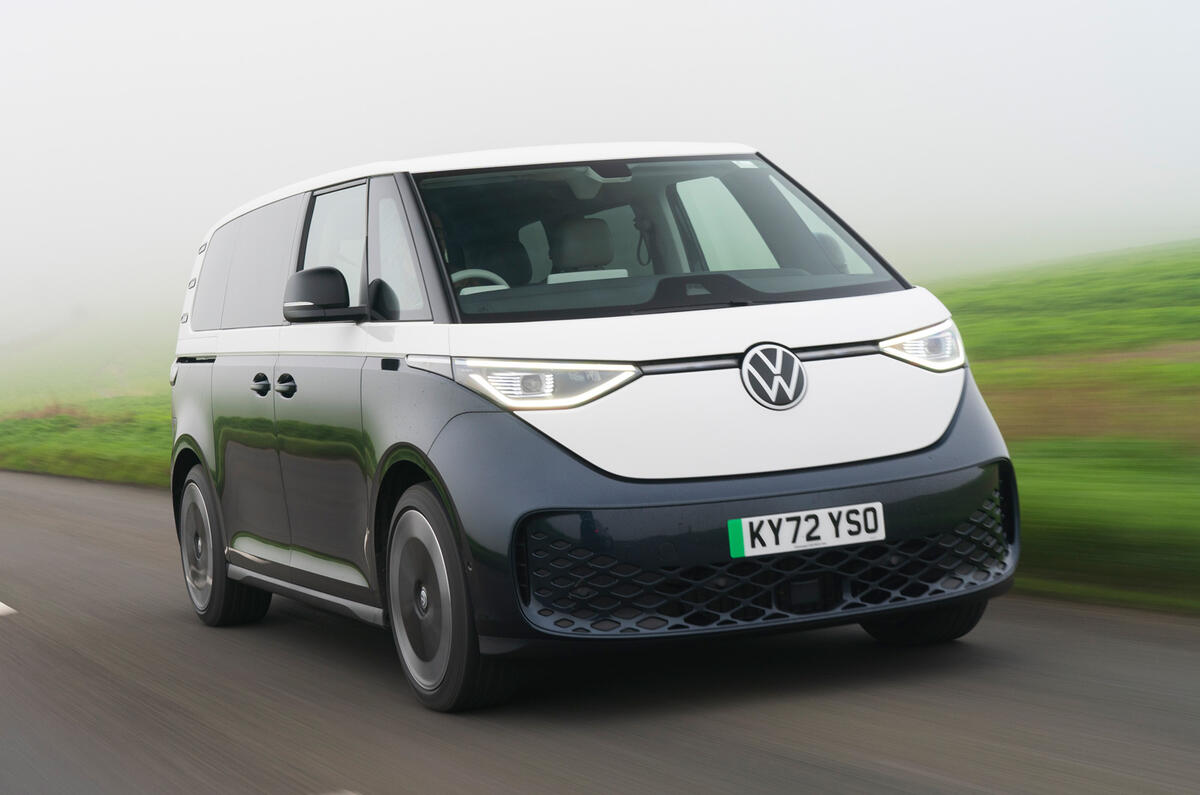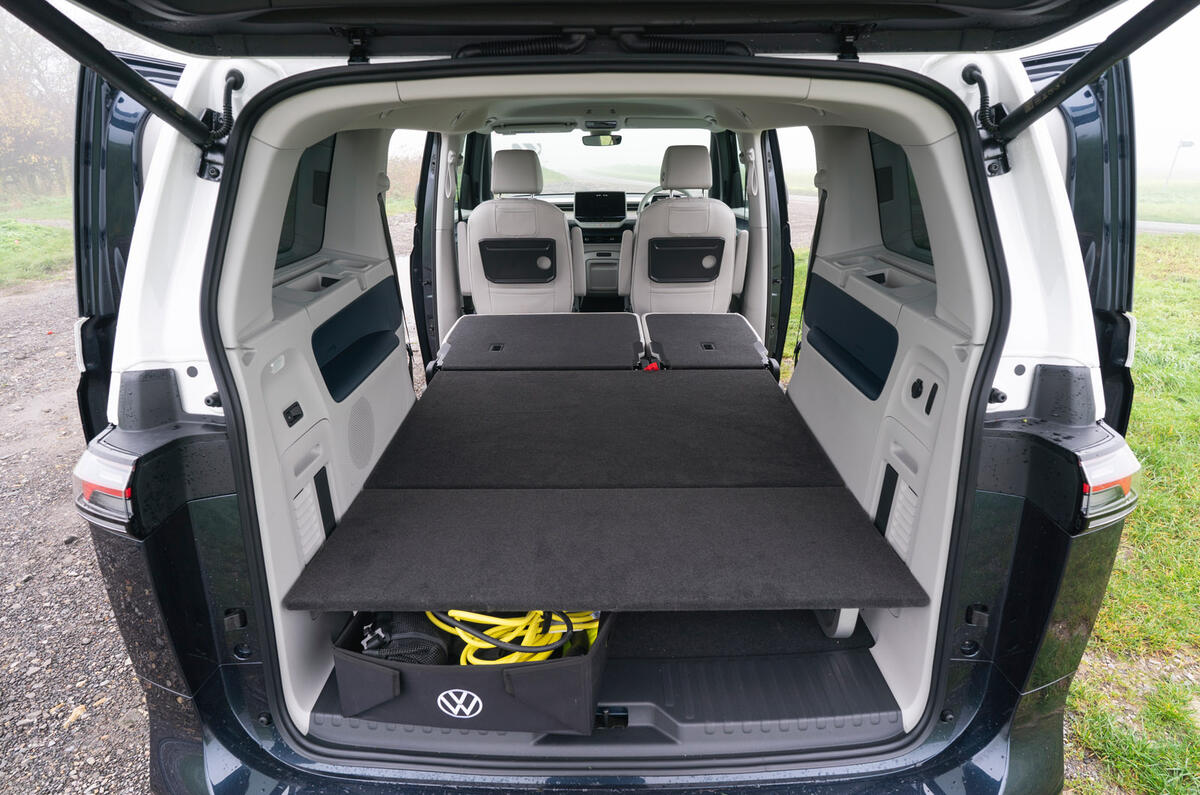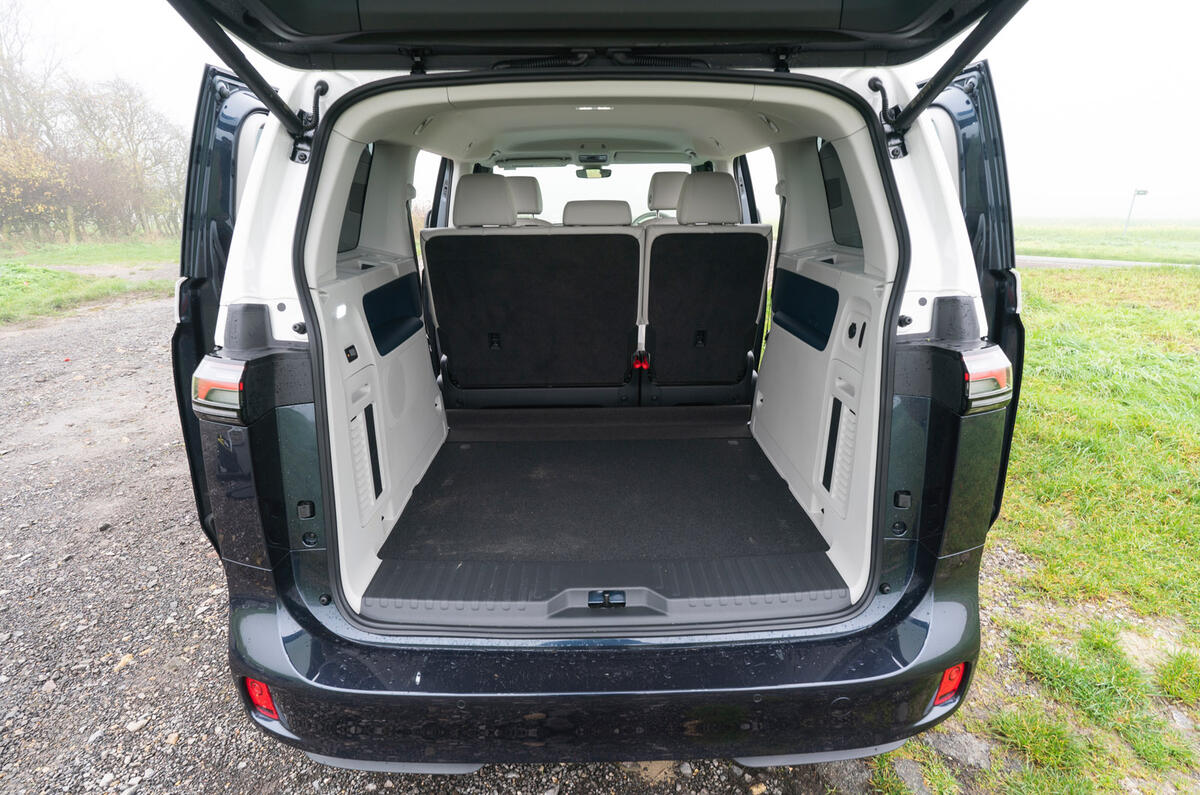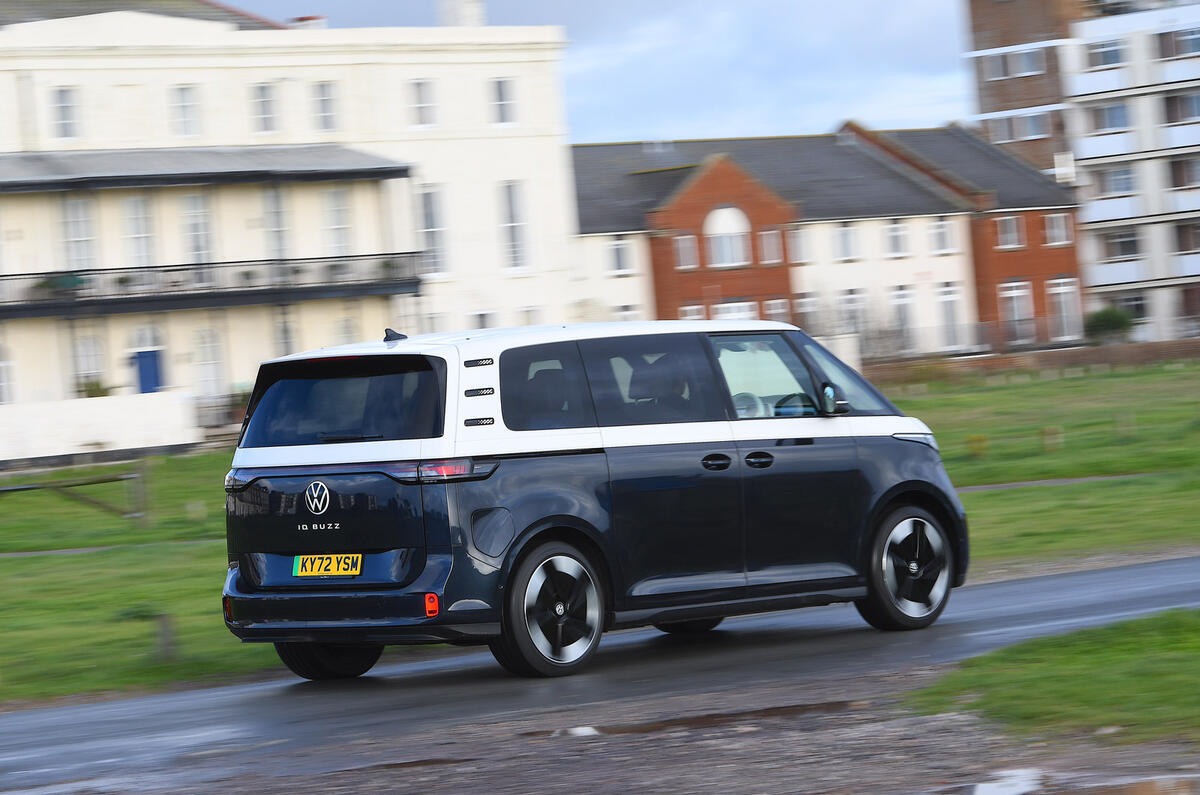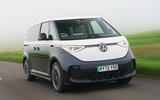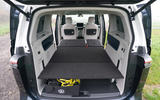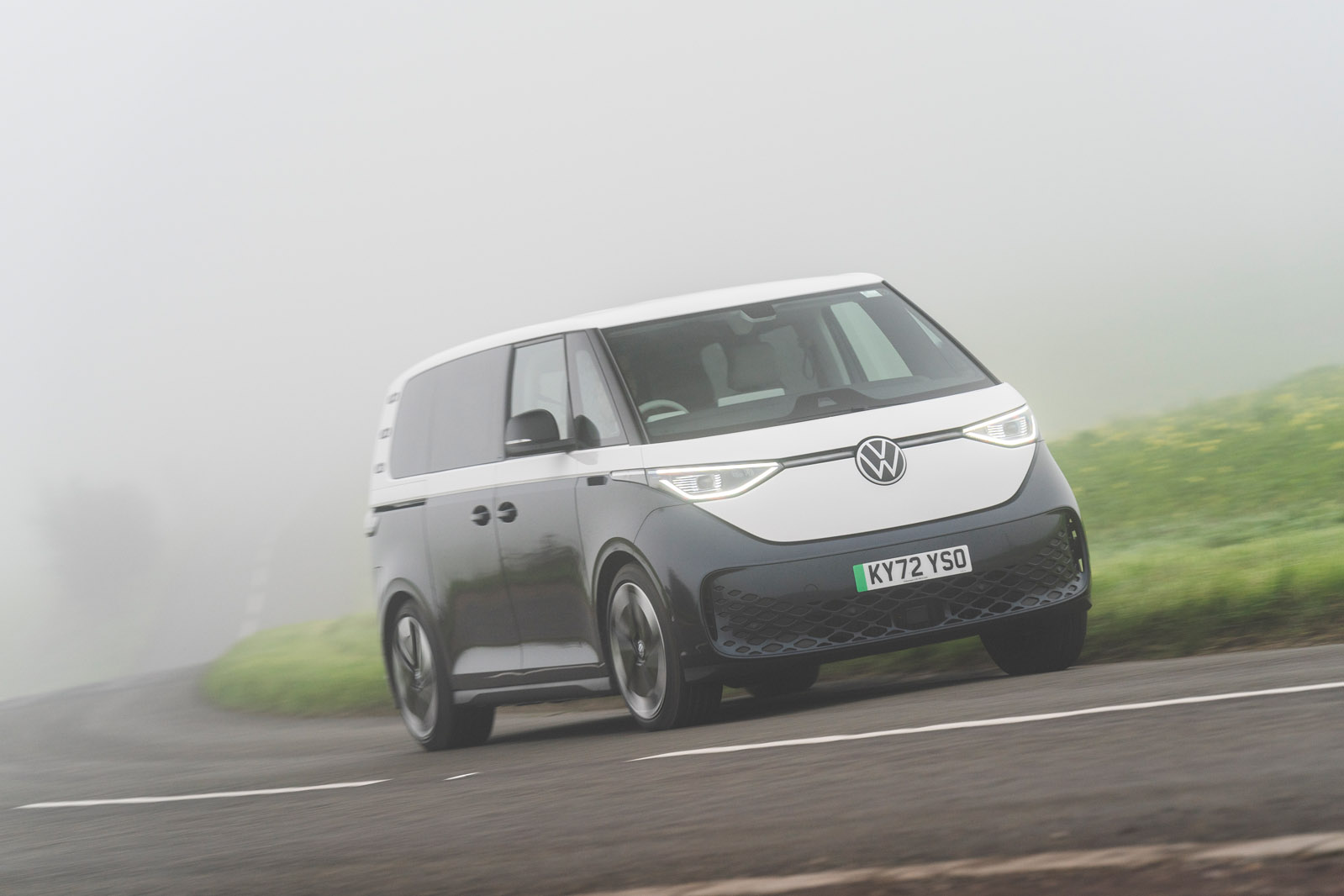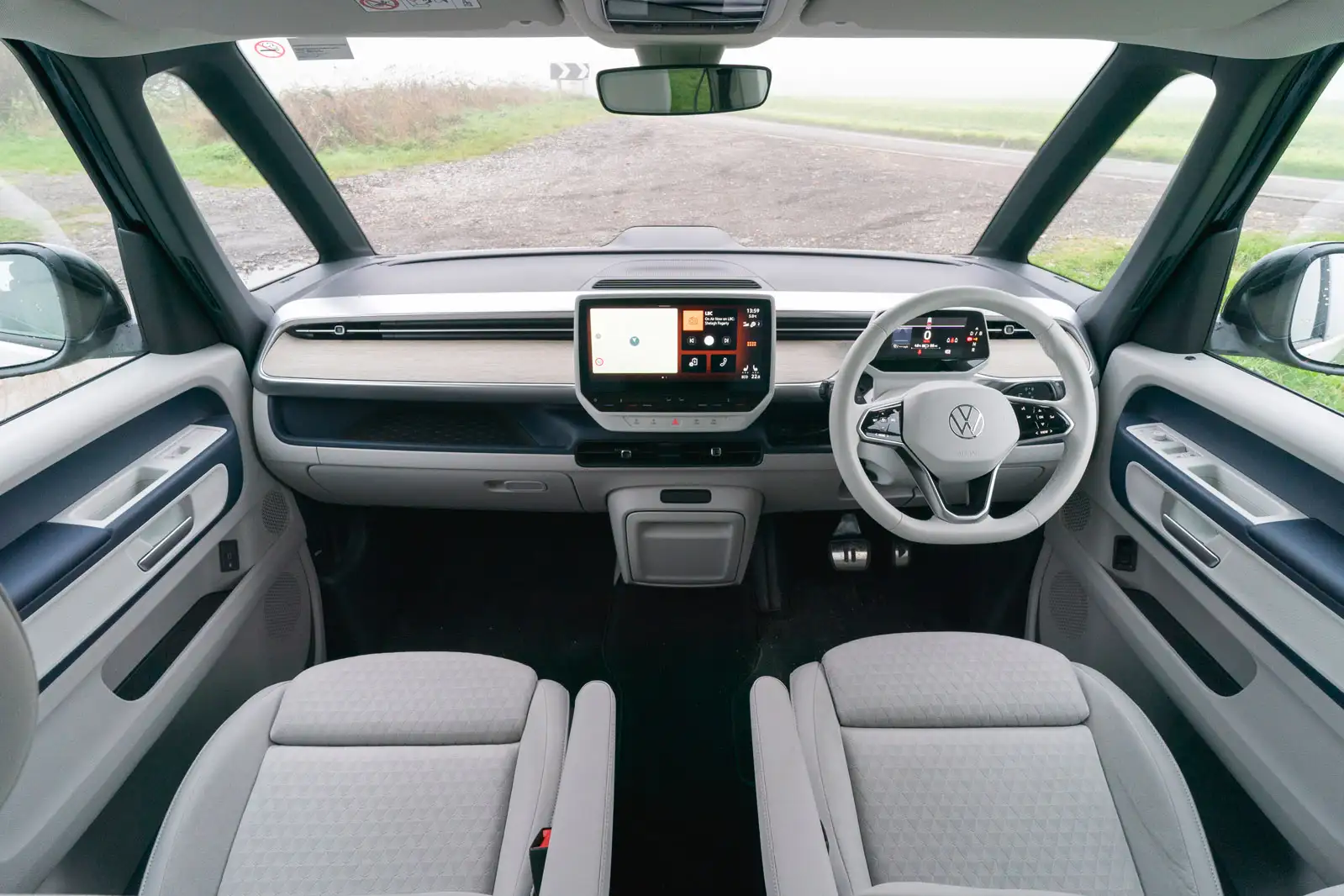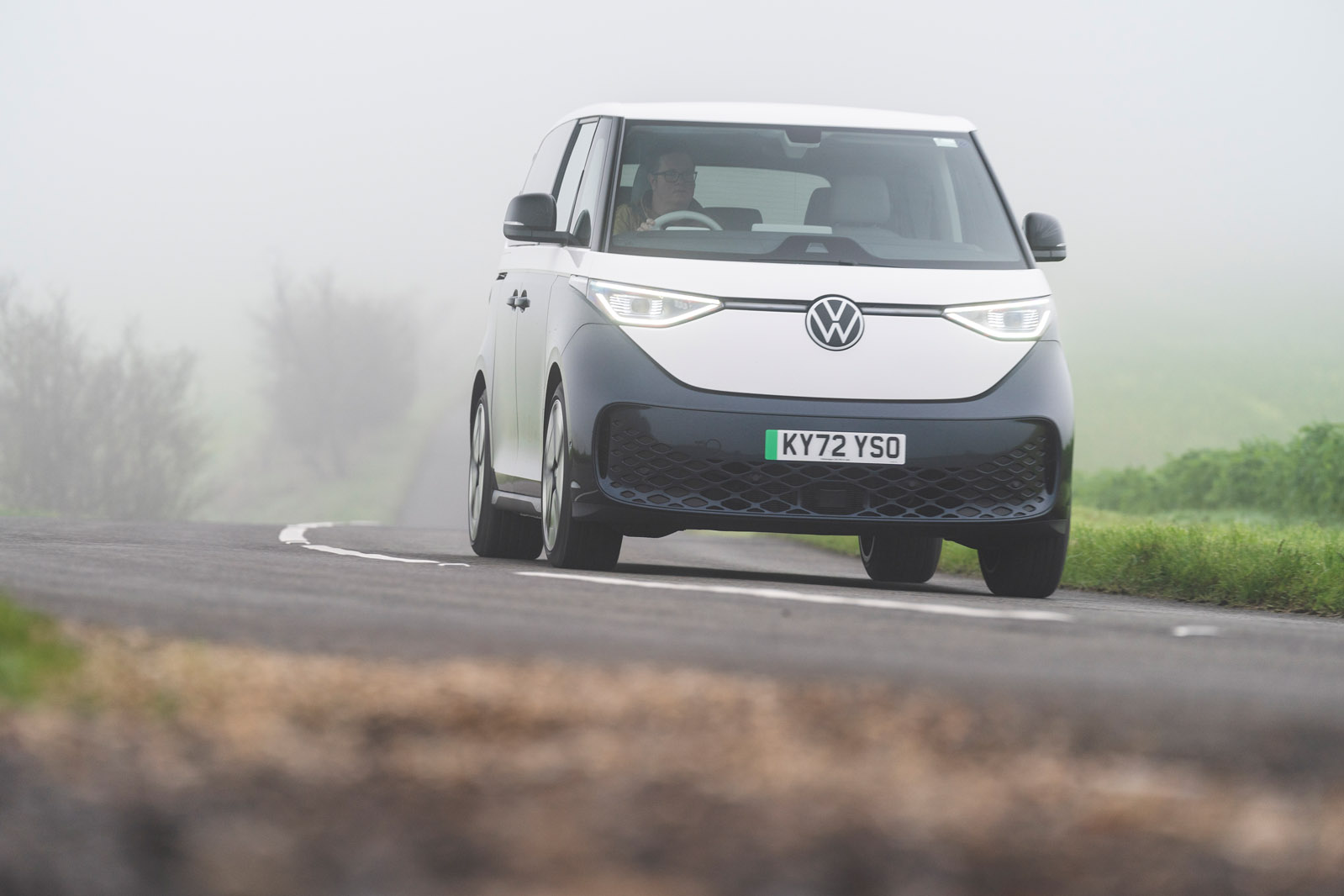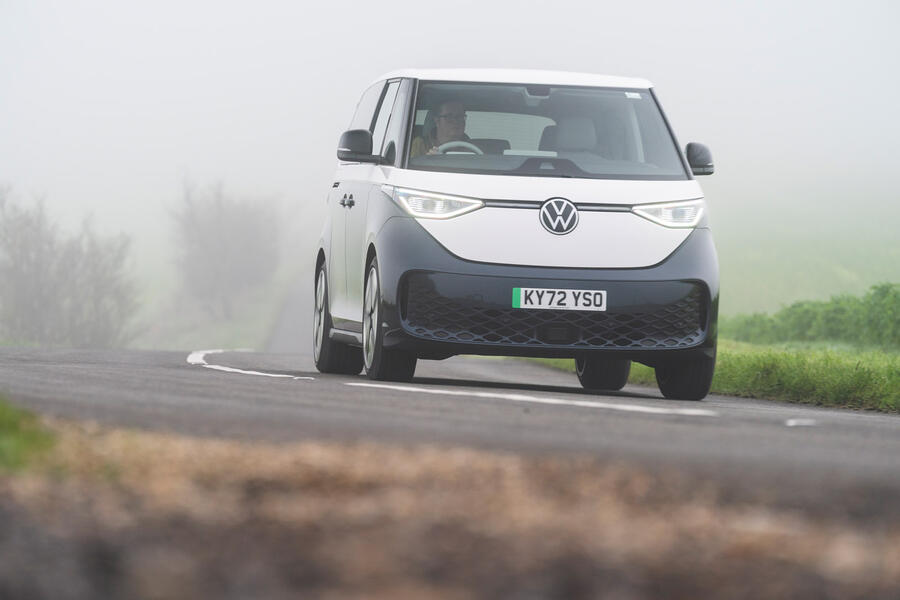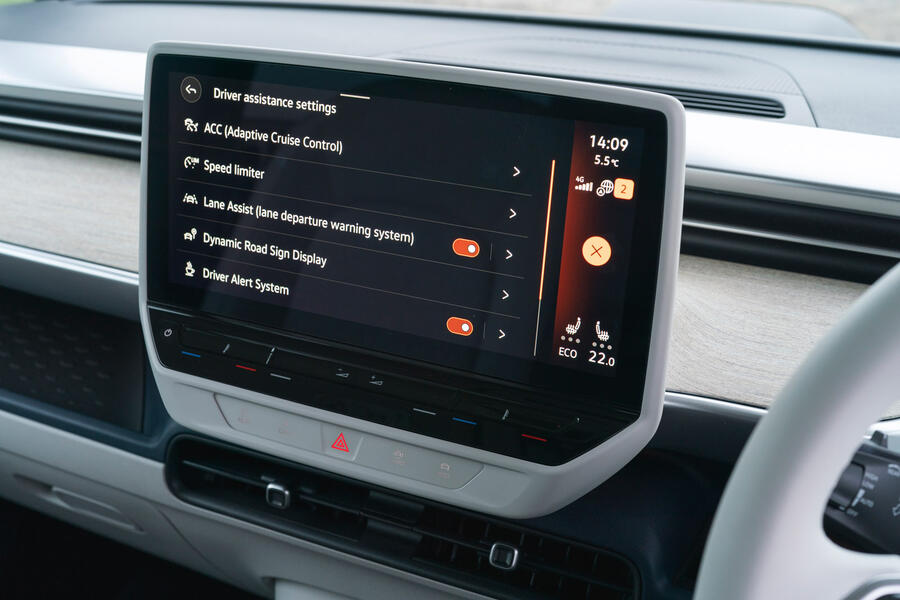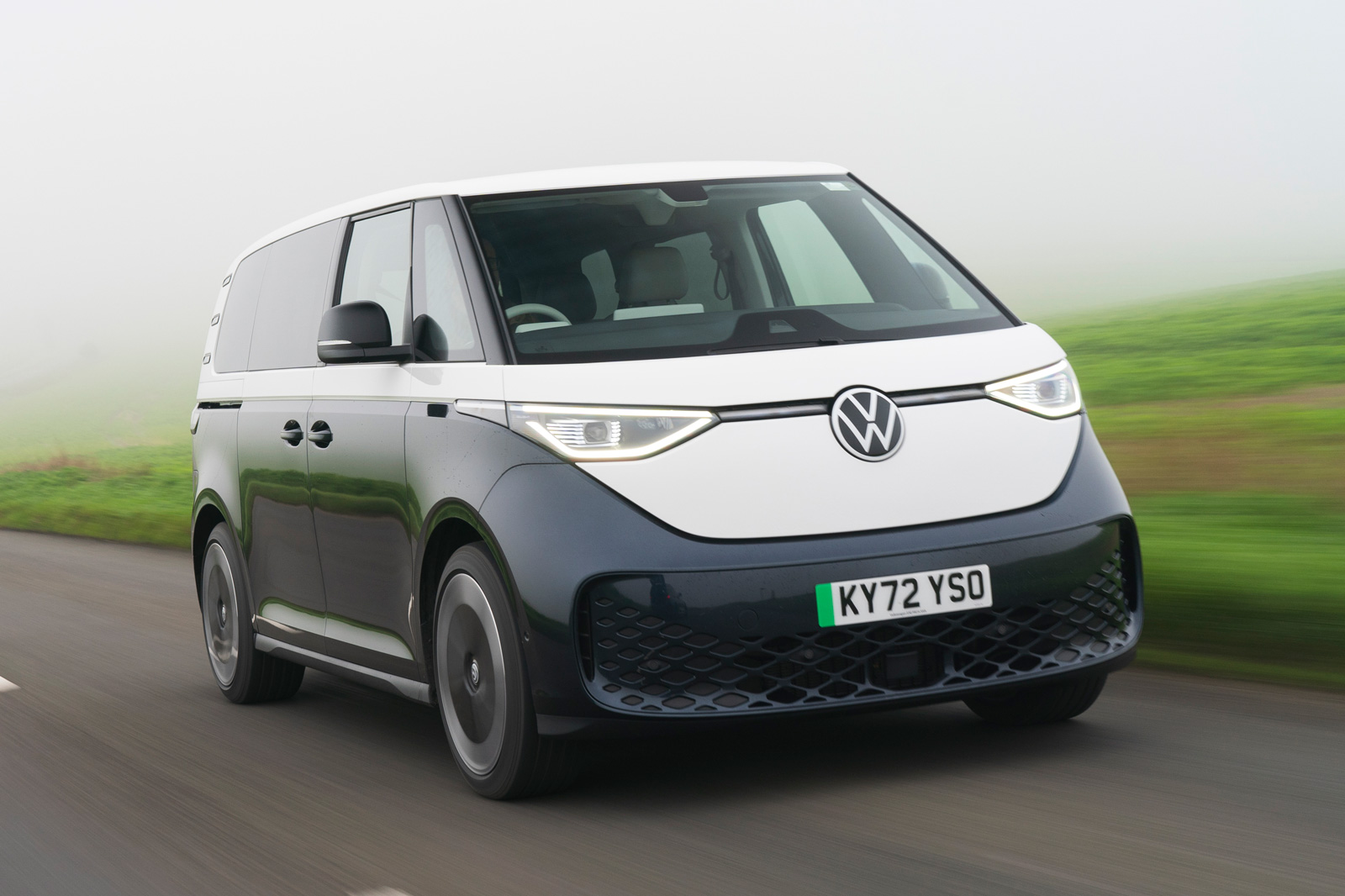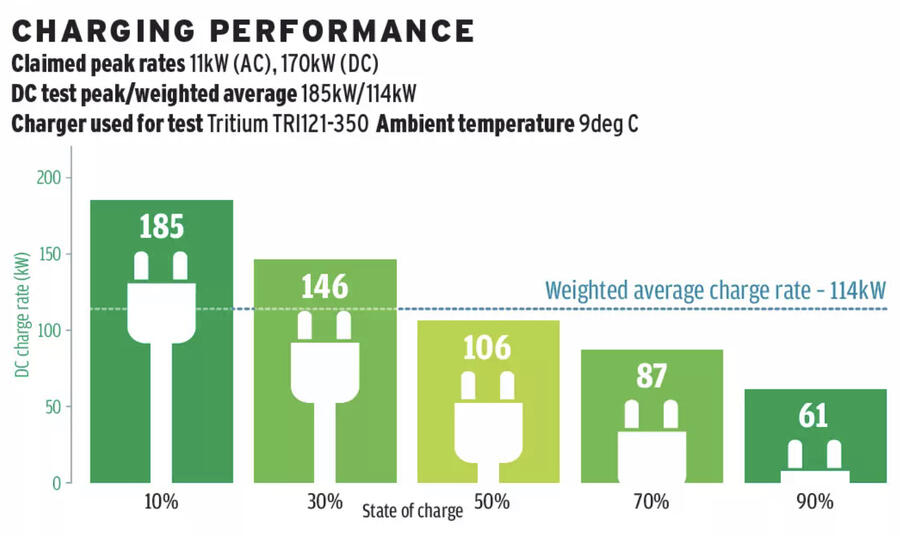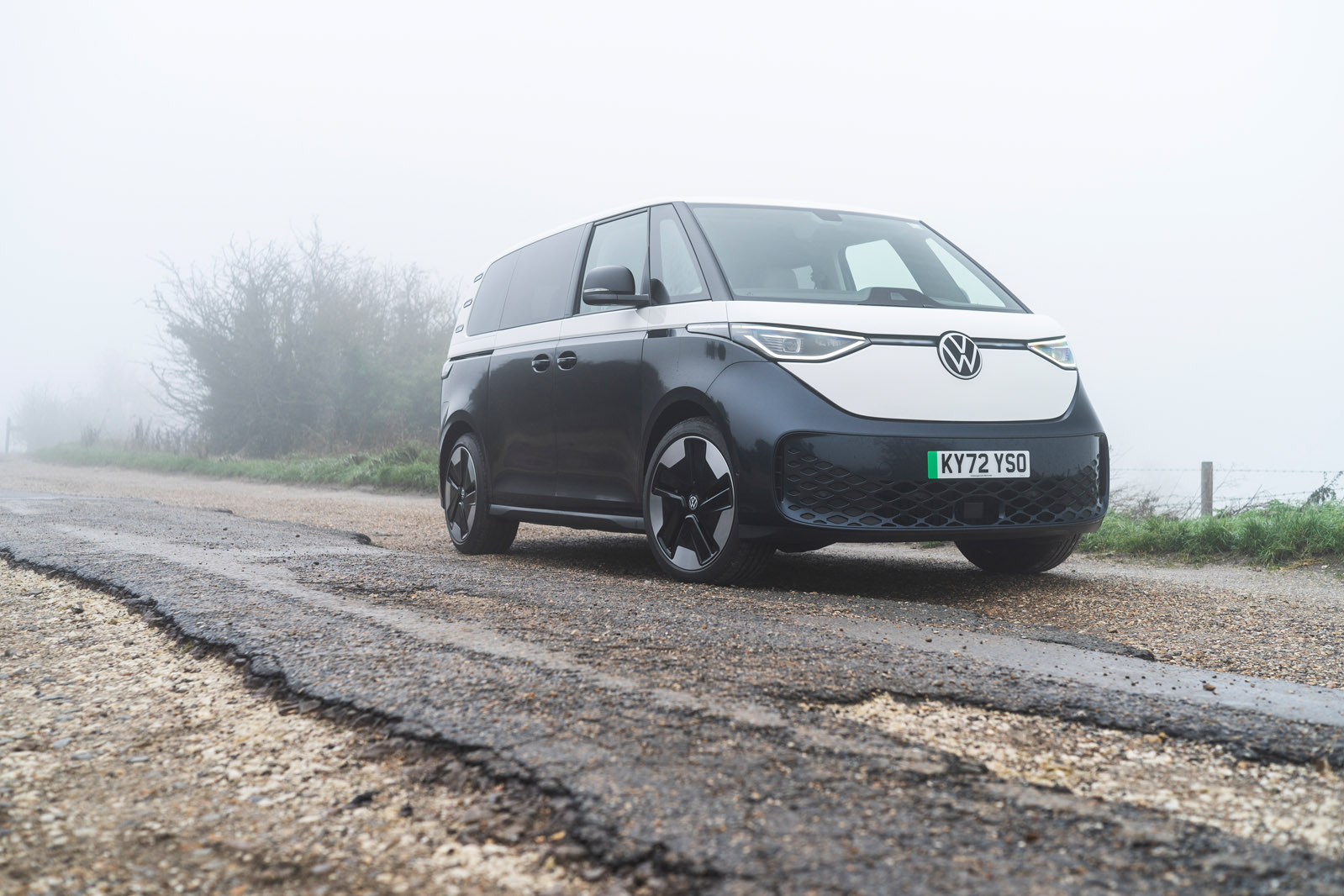A great many buyers will look to the interior of the ID Buzz for a return on the car’s high showroom price by way of space and versatility. And in some respects, they’ll find both, but VW certainly hasn’t thrown very many added-practicality features in here as standard.
In five-seat form, the Buzz comes with an open floor. VW offers a removable centre console called the Buzz Box, which fixes to the floor via four clips.
It leaves the way clear to pass easily from the front to the back row of seats – a welcome route of egress for those in the front, since the sheer width of the Buzz can leave you with little space to open the front doors when parked in a typical parking bay (where the sliding rear passenger doors can often be opened much more easily).
It’s a sizeable step up into the driver’s seat, in which you sit bent-legged and upright, with plenty of room around you and generous head room in particular.
Visibility is good and seat comfort is likewise. VW’s choice of lighter cabin materials (synthetic leather is used in place of the real thing, and recycled plastics and textiles are adopted where possible) confounds the workaday ambience you might be expecting.
Cabin storage is moderately well provided but isn’t as abundant as it might be (likewise to avoid that van vibe, we would guess; no newspapers or tools kept on the upper dashboard, please).
The instrumentation and secondary controls are adequately well thought out, if a little odd. The downsized digital instrument screen behind the steering wheel gives you just enough information about speed, remaining range and assisted driving systems settings, although it could certainly do that at a more easily readable scale.
The transmission controls, meanwhile, are on the right-hand indicator stalk – another slightly regrettable decision, because if they had been accommodated on a controller of their own (on the side of that instrument binnacle for example, as they are on an ID 3), then operating the wipers, indicators and lights might have felt more intuitive. As it is, it all takes just a little relearning.
In the back, the second-row seats slide and recline, but they don’t tumble forward and they can’t be removed, in the five-seater.
Things get far more versatile in the larger long-wheelbase version. As standard, the model comes with seven seats, configured 2/3/2. There’s also a six-seat option, in a 2/2/2 layout.
With the seven-seat option, the third row of seats can be removed completely to create a 1340-litre cargo space – an increase of 219 litres over the SWB. It measures 306 litres with all the seats in use. It’s a very usable space, with comfortable seats, and you’d be hard-pressed to find someone who'd complain about the leg room.
In the cargo bay, available space is pretty generous, but folding the rear seats gives you a fully flat loading area only by virtue of the removable ‘Multi-flex’ boot board, which effectively raises the boot floor. You can load beneath this, but leave it in place and you’ll have only the accessible maximum loading height (for the easy carrying of bulky outdoor equipment, for instance) of a big SUV.
Multimedia system
The strengths and irritations of Volkswagen’s Discover Pro navigation and infotainment system are now well known to the Autocar road test team; in one form or another, it has probably appeared in 20% of our road test subjects over the past two years.
The Buzz comes with a three-year We Connect Plus data connection for music streaming, connected destination searching and smartphone-based app functionality. Wireless device charging is standard, likewise wireless Apple CarPlay and Android Auto smartphone mirroring.
Thankfully, the ID Buzz’s 2024 model update introduced the brand’s latest infotainment system, running a more advanced 5.2 software version. It’s much snappier than before, but the same, often distracting layout remains. The benefit is that the climate control sliders are now lit so they can be used at night.




